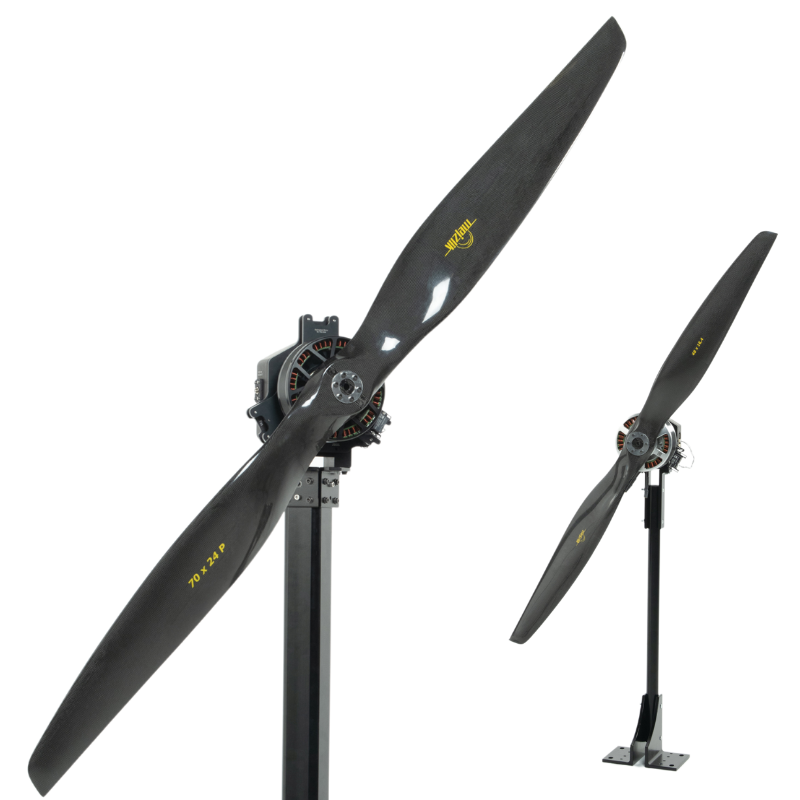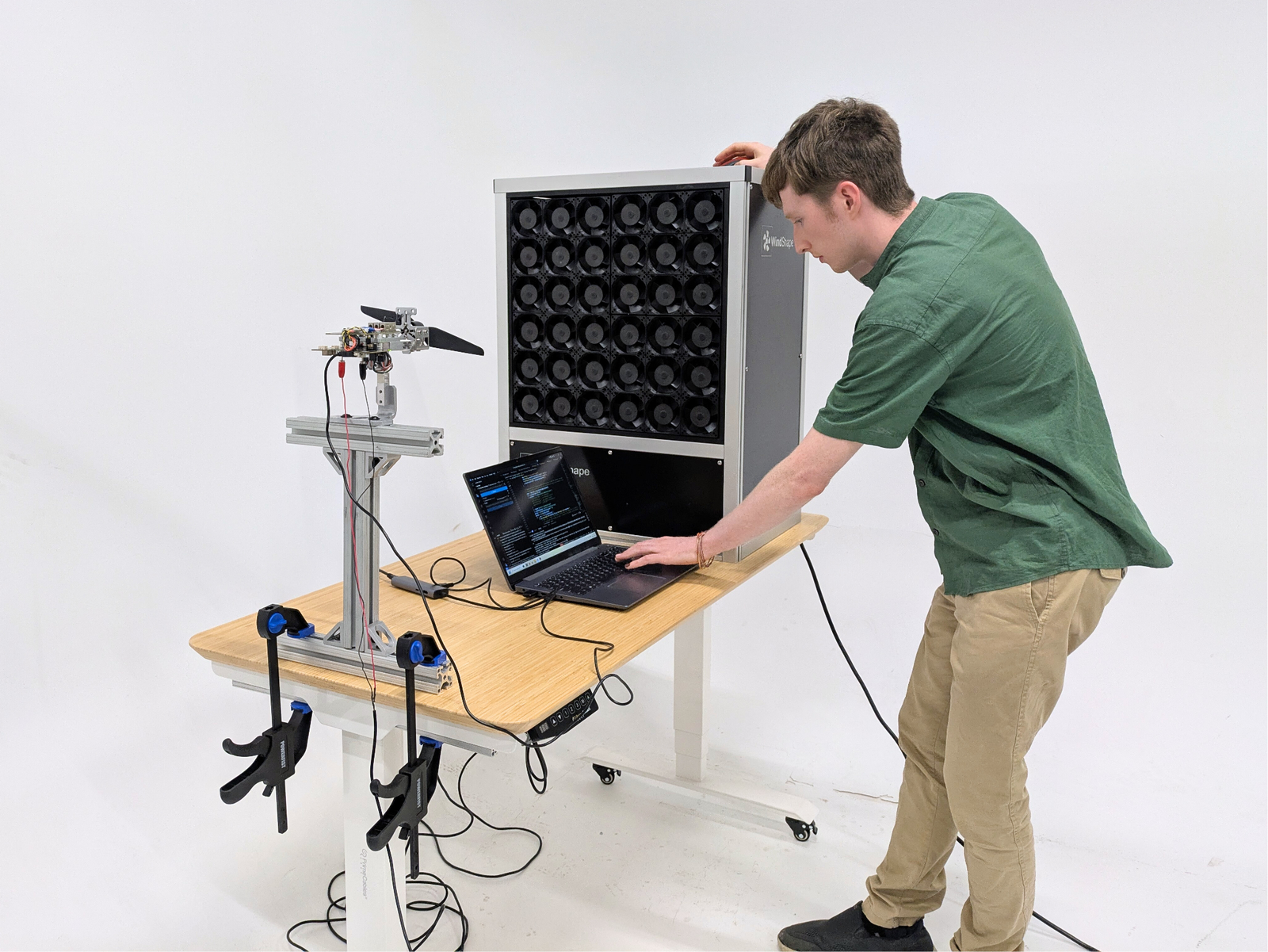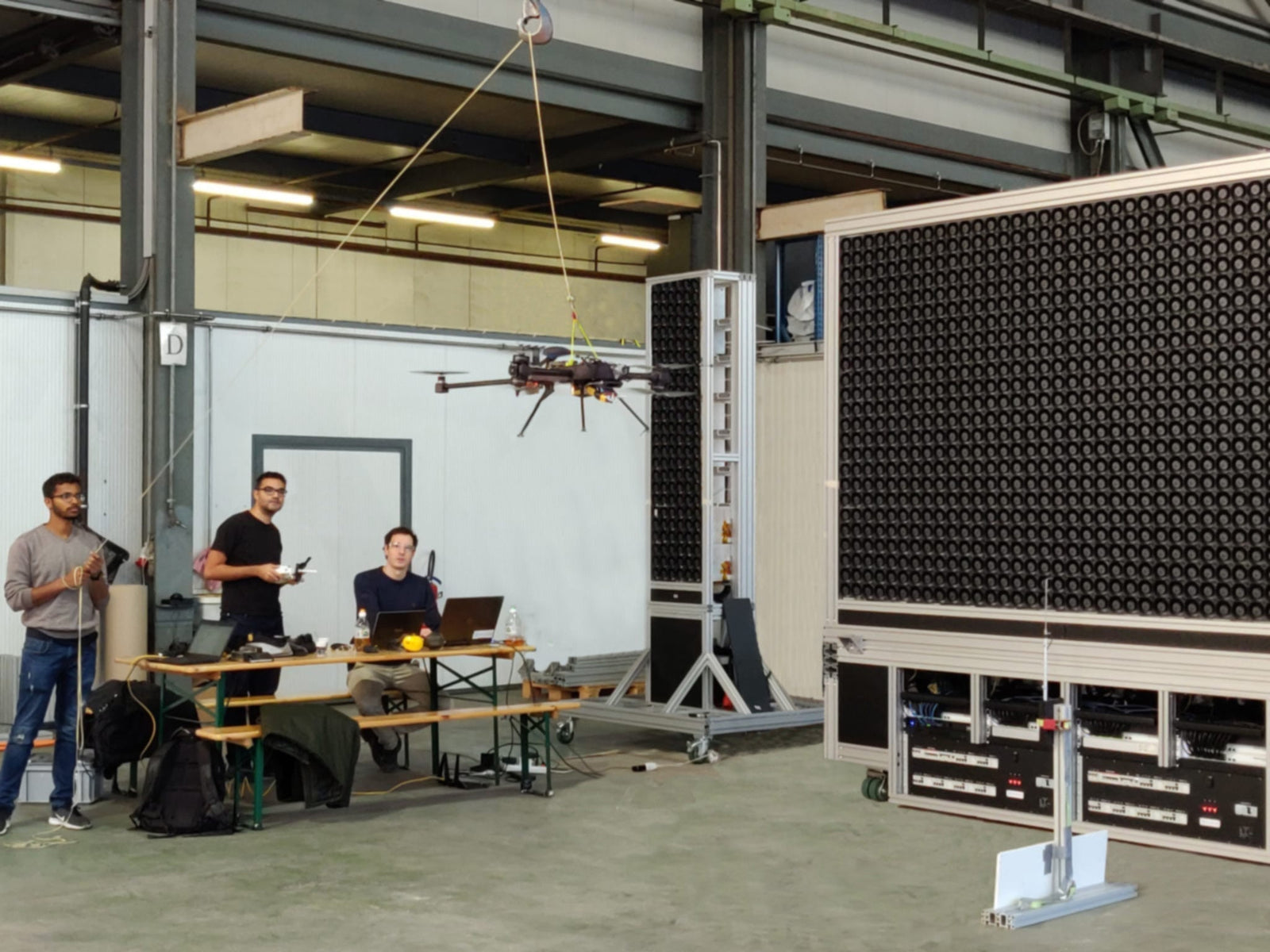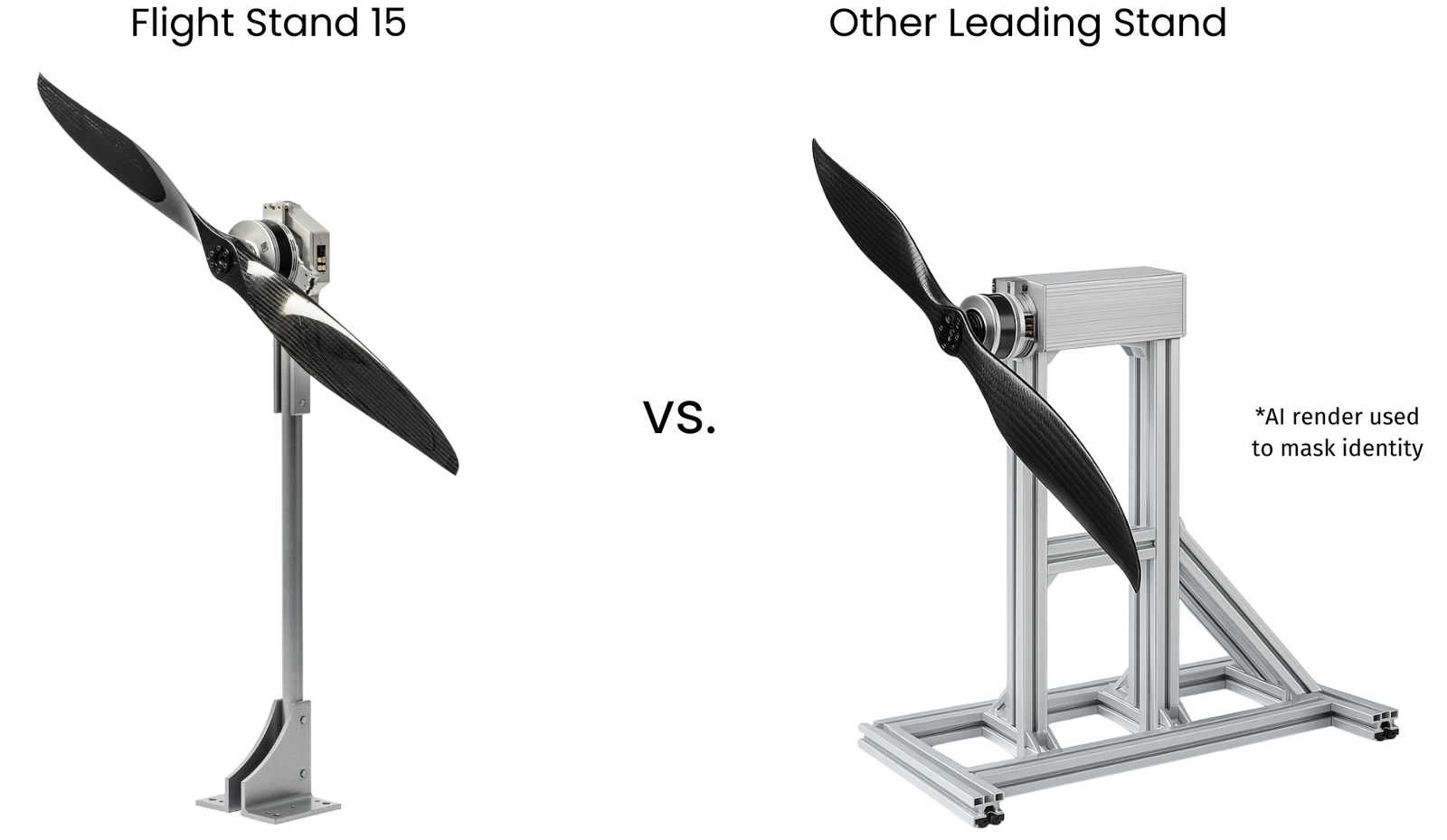By Baiyun Tang and Augustin Angaud
Setting up a propulsion lab for UAV testing involves careful planning to ensure safety, reliability, and component compatibility.
In this Q&A, Tyto Robotics engineers share practical tips for selecting power sources, sizing components, and building a safe, flexible, high-performance test environment.
Table of Contents:
- How to determine your power requirements
- How to size your ESC for your motor
- Variables to consider: Current, voltage, C-rating
- Power requirements for coaxial and distributed electric propulsion systems
- When to use a battery pack vs. a power supply
- Safety considerations for batteries and power supplies
- Last tips for installing and operating a power systems
Q1: How to determine your power requirements
A: Typically, it’s the ESC that dictates the system’s power requirements. For example, an APD UHV rated for 28S and 300 A means up to 28 LiPo cells (103.6 V nominal) and 300 A continuous. Multiplying those values gives you a 35 kW power source requirement.
However, it can be challenging if you’re pairing the same motor with different ESCs. Rather than checking one by one, a better approach is to estimate power through thrust. For instance, if the powertrain is expected to deliver 120 kgf, and assuming an efficiency of about 3 gf/W, you’ll need at least 36 kW of continuous power. To be safe, you might go with a 40 kW system.
Q2: How to size your ESC for your motor
A: It depends on the current passing through the motor and the torque it generates. For example, with a 30 kW motor running at 120 V, the ESC needs to support the same voltage and provide even more current. A 120 V, 320 A ESC would be appropriate.
Once the required continuous power is known, it’s just a matter of choosing an ESC with matching voltage and sufficient current rating—with some buffer for safety.
Q3: Variables to consider: Current, voltage, C-rating
A: Continuous current vs. peak current: motors and ESCs can spike unexpectedly even at steady speeds, so include a buffer.
Supply voltage and the motor’s Kv: the motor should spin the propeller at the right speed, not too fast (risking ESC damage) or too slow (failing to reach target thrust). This is especially important when using batteries, as it’s not easy to adjust the number of cells.
The battery’s C-rating: if the discharge rate is too low for the required current, performance will suffer.
Also keep in mind the maximum load of each component. For example, if the torque is too high for the given RPM, the motor could be overloaded, causing high current peaks that destabilize or damage the power supply.
Q4: Power requirements for coaxial and distributed electric propulsion systems
A: With coaxial systems, the voltage remains the same but the current doubles compared to a single motor setup. You’ll need to calculate total power across all powertrains, since they often share a common power source.
Two things to watch:
- Battery capacity and C-rating must support the higher combined discharge current. Add capacitor banks to the ESC’s DC input side. Regenerative braking from one motor can send current that damages others.
- Aerodynamic interactions between coaxial propellers affect power needs. For equal-sized props, the required power isn’t 2× but closer to 1.7×. The rear prop produces less torque and thrust at the same RPM, reducing total torque and power requirements.
Q5: When to use a battery pack vs. a power supply
A: Both options are valid. We use batteries for high-power testing. They’re more resilient and can absorb regenerative energy. Conversely, we use power supplies for smaller setups. They’re flexible and can be adjusted from a few volts up to 100 V, covering a wide range of ESCs.
Power supplies must be plugged into a wall and are less tolerant of voltage drops and current spikes. They convert AC to DC using diodes and stabilize with capacitors, which can overheat under peak loads.
Batteries, though slow to charge, handle current peaks better due to chemical storage. They’re modular, portable, and can be configured in series or parallel to change voltage and current as needed.
Q6: Safety considerations for batteries and power supplies
A: Two key concerns:
- Reverse current during regenerative braking: if the ESC doesn’t have capacitors on the DC side, most power supplies can’t handle the return current. Use a diode or capacitor as a buffer.
- Overheating: large battery banks usually include a BMS with a thermal shutoff. Smaller systems may lack this, so use external temperature probes or thermocouples. These can be configured for automatic cutoff using the Flight Stand software. (Tyto’s Flight Stands come with these probes.)
Also important:
- Always have a safety switch that shuts down the power source. Place it close to the operator and far from the propulsion system. In the lab, it’s best to separate the operator and the test area entirely.
- Wear high-voltage gloves when working on energized components.
- Keep the correct type of fire extinguisher for each power source: batteries and power supplies.
Q7: Last tips for installing and operating a power systems
A: Read your product manuals carefully. Specs, setup instructions, and safety limits are there to help you avoid problems and keep your lab safe and efficient.
Learn More:
Article: How Does an ESC Work
Article: LiPo Battery Guide for Drones
Article: How to Measure BLDC Motor Torque



 Back to Blog
Back to Blog


Leave a comment